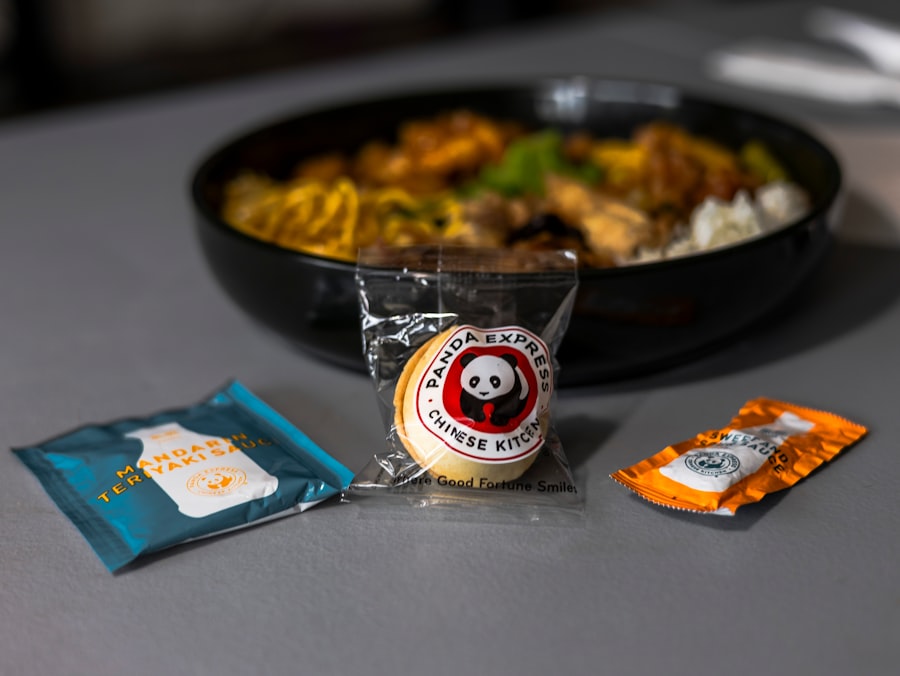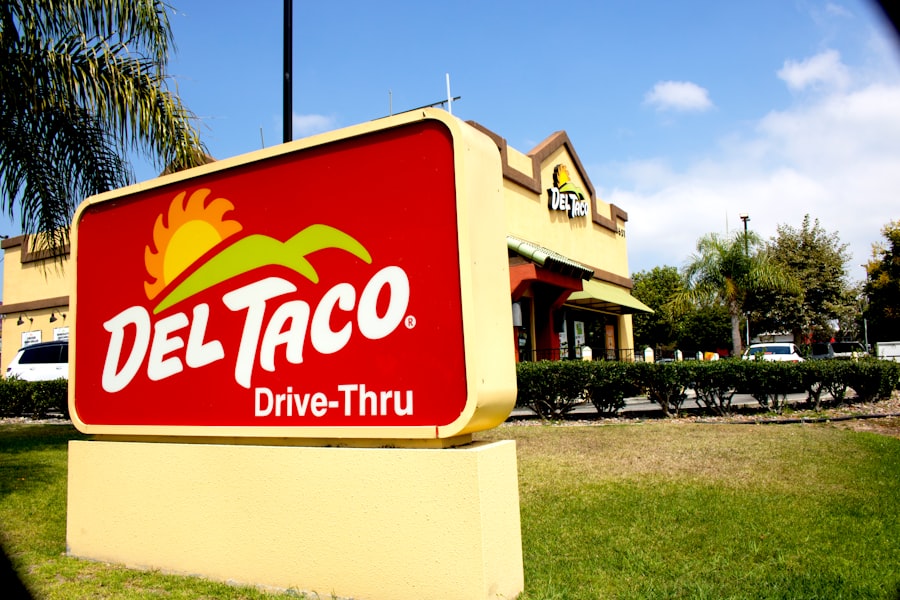The concept of fast food in America can be traced back to the early 20th century, when the industrial revolution began to reshape the nation’s eating habits. As urbanization surged, people found themselves with less time to prepare meals at home. This shift created a demand for quick, convenient dining options.
The first notable establishment that catered to this need was White Castle, founded in 1921. It introduced the idea of mass-producing food items that could be served quickly and efficiently, setting the stage for a new culinary phenomenon. The small, square hamburgers became a symbol of this burgeoning industry, appealing to a population eager for affordable and speedy meals.
In the years that followed, the fast food model continued to evolve. The introduction of assembly line techniques in food preparation allowed for even greater efficiency. By the 1940s, the McDonald brothers opened their first restaurant in San Bernardino, California, which would later become the prototype for the modern fast food franchise.
Their innovative approach to service and menu design revolutionized the dining experience, emphasizing speed and consistency. This marked a significant turning point in American food culture, as fast food began to establish itself as a staple of everyday life.
Key Takeaways
- Fast food in America was born out of the need for quick and convenient meals during the post-war era.
- The rise of drive-thru culture revolutionized the fast food industry, making it even more convenient for consumers.
- McDonald’s had a significant impact on American fast food, popularizing the concept of standardized menus and efficient service.
- The advent of healthier fast food options has led to a shift in consumer preferences and the introduction of more nutritious menu items.
- Fast food has had a profound influence on American culture, shaping dietary habits and contributing to the rise of on-the-go eating.
The Rise of Drive-Thru Culture
The drive-thru concept emerged in the 1940s and 1950s, coinciding with the rise of automobile culture in America. As car ownership became more widespread, consumers sought convenience that matched their increasingly mobile lifestyles. Fast food chains recognized this trend and began to implement drive-thru windows, allowing customers to place orders without leaving their vehicles.
This innovation not only catered to the needs of busy families but also appealed to a generation that valued speed and efficiency. The drive-thru experience quickly became synonymous with fast food culture. Chains like McDonald’s and Burger King capitalized on this trend, creating streamlined menus designed for quick service.
The ability to order and receive food without stepping out of the car transformed the way Americans dined. It also fostered a sense of community, as families could enjoy meals together while on the go. Over time, drive-thrus became a defining feature of fast food restaurants across the country, solidifying their place in American dining culture.
The Impact of McDonald’s on American Fast Food

McDonald’s has played a pivotal role in shaping the fast food landscape in America and beyond. Founded by Richard and Maurice McDonald in 1940, the chain introduced a revolutionary system of food preparation that emphasized speed and uniformity. Their “Speedee Service System” laid the groundwork for what would become the modern fast food model.
By focusing on efficiency and consistency, McDonald’s set a standard that many other chains would strive to emulate. The brand’s expansion throughout the latter half of the 20th century further solidified its influence on American fast food culture. With its iconic golden arches and memorable advertising campaigns, McDonald’s became a household name.
The introduction of the Happy Meal in 1979 not only catered to children but also established a new marketing strategy that focused on family-friendly dining experiences. As McDonald’s grew, it also played a significant role in shaping consumer expectations regarding convenience and affordability in dining.
The Advent of Healthier Fast Food Options
| Fast Food Chain | Healthy Options Offered | Calorie Count | Price Range |
|---|---|---|---|
| McDonald’s | Salads, Grilled Chicken Sandwich | 250-500 calories | 3-7 |
| Subway | Fresh Fit Subs, Veggie Delite | 200-400 calories | 4-8 |
| Chipotle | Salad bowls, Burrito bowls | 400-800 calories | 7-10 |
As awareness of health and nutrition increased in the late 20th century, fast food chains began to adapt their menus to meet changing consumer preferences. The rise of obesity rates and health-related concerns prompted many diners to seek healthier alternatives. In response, chains like Subway and Chipotle emerged, offering fresh ingredients and customizable options that appealed to health-conscious consumers.
This shift marked a significant turning point in the fast food industry, as it began to embrace a more diverse range of offerings. In recent years, established fast food giants have also made strides toward healthier menu options. McDonald’s introduced salads and fruit options, while Burger King launched its Impossible Whopper as a plant-based alternative to traditional beef patties.
These changes reflect a growing recognition that consumers are increasingly prioritizing health without sacrificing convenience. The advent of healthier fast food options has not only expanded choices for diners but has also encouraged competition among chains to innovate and improve their offerings.
The Influence of Fast Food on American Culture
Fast food has become deeply ingrained in American culture, influencing everything from social interactions to economic trends. The convenience and affordability of fast food have made it a popular choice for families, students, and busy professionals alike. It has also become a cultural touchstone, often associated with nostalgia and shared experiences.
For many Americans, fast food represents more than just a meal; it embodies a lifestyle characterized by speed and accessibility. Moreover, fast food has played a significant role in shaping social dynamics. Drive-thrus have become gathering places for friends and families, while fast food restaurants often serve as venues for celebrations or casual outings.
The prevalence of fast food in popular media—through movies, television shows, and advertisements—has further cemented its status as an integral part of American life. As such, fast food continues to reflect broader societal trends and values, from consumerism to convenience.
The Globalization of American Fast Food Chains

The globalization of American fast food chains has transformed dining experiences around the world. As these brands expanded internationally, they brought with them not only their menus but also their business models and marketing strategies. McDonald’s, KFC, and Starbucks are just a few examples of American chains that have successfully penetrated global markets, adapting their offerings to local tastes while maintaining their core identities.
This globalization has sparked both admiration and criticism. On one hand, it has introduced diverse culinary experiences to consumers worldwide; on the other hand, it has raised concerns about cultural homogenization and the impact on local cuisines. In many countries, American fast food chains have become symbols of modernity and consumer culture, often associated with Western lifestyles.
This phenomenon has led to debates about cultural imperialism and the preservation of traditional foods in an increasingly globalized world.
The Emergence of Fast Casual Dining
In recent years, the rise of fast casual dining has introduced a new segment within the broader fast food industry. Fast casual restaurants combine elements of quick service with higher-quality ingredients and a more inviting atmosphere. Chains like Panera Bread and Chipotle have capitalized on this trend by offering fresh, customizable meals in a more relaxed setting.
This shift reflects changing consumer preferences for healthier options without sacrificing convenience. Fast casual dining has also blurred the lines between traditional fast food and sit-down restaurants. Customers are increasingly seeking out dining experiences that prioritize quality and sustainability while still providing quick service.
This evolution has prompted many established fast food chains to reevaluate their menus and service models in order to compete with this emerging segment. As consumers continue to prioritize health and quality, fast casual dining is likely to play an increasingly prominent role in the future of American dining.
The Evolution of Fast Food Marketing
Fast food marketing has undergone significant changes over the decades, adapting to shifting consumer preferences and technological advancements. In the early days, advertising relied heavily on print media and radio spots to reach potential customers. However, as television became more prevalent in American households during the mid-20th century, fast food chains began to leverage this medium for their marketing campaigns.
Iconic jingles and memorable mascots became staples of advertising strategies aimed at capturing the attention of families and children. In recent years, digital marketing has transformed how fast food brands engage with consumers. Social media platforms have become essential tools for reaching younger audiences, allowing brands to create interactive campaigns that resonate with their target demographics.
Influencer partnerships and viral challenges have further revolutionized marketing strategies within the industry. As technology continues to evolve, fast food marketing will likely adapt even further, embracing new platforms and trends to maintain relevance in an ever-changing landscape.
The Role of Technology in the Fast Food Industry
Technology has played an increasingly vital role in shaping the fast food industry over the past few decades. From point-of-sale systems that streamline transactions to mobile apps that allow customers to place orders ahead of time, technological advancements have enhanced efficiency and convenience for both consumers and restaurant operators. Many chains have embraced digital ordering kiosks as a way to reduce wait times and improve customer experience.
Moreover, technology has facilitated innovations such as delivery services through partnerships with companies like Uber Eats and DoorDash. This shift has allowed fast food chains to reach customers beyond their physical locations, catering to those who prefer dining at home or on-the-go. As technology continues to advance, it is likely that automation will play an even larger role in the industry—potentially transforming everything from kitchen operations to customer interactions.
The Push for Sustainability and Ethical Practices in Fast Food
In recent years, there has been a growing push for sustainability and ethical practices within the fast food industry. As consumers become more environmentally conscious, they are increasingly demanding transparency regarding sourcing practices and ingredient quality. Many fast food chains have responded by implementing initiatives aimed at reducing waste, sourcing ingredients responsibly, and promoting animal welfare.
For instance, several major chains have committed to using cage-free eggs or sourcing meat from suppliers that adhere to humane practices. Additionally, some restaurants are exploring plant-based alternatives as a way to reduce their environmental footprint while catering to changing consumer preferences.
The Future of American Fast Food
The future of American fast food is poised for continued evolution as consumer preferences shift toward healthier options and sustainable practices. As technology advances further, automation may play an even larger role in streamlining operations while enhancing customer experiences through personalized service offerings. Additionally, as global influences continue to shape American dining habits, fast food chains may increasingly incorporate diverse flavors and ingredients into their menus.
Moreover, as younger generations prioritize health and sustainability over convenience alone, fast food brands will need to adapt their strategies accordingly. This may involve reimagining traditional menu items or exploring innovative concepts like ghost kitchens—delivery-only establishments designed for efficiency without dine-in service. Ultimately, the future of American fast food will likely reflect an ongoing balance between convenience, quality, health consciousness, and ethical practices as it continues to evolve within an ever-changing cultural landscape.
The history of American fast food is a fascinating journey that reflects the country’s evolving culture and economy. From the early days of roadside diners to the global franchises we know today, fast food has become an integral part of American life. For those interested in exploring more about the cultural impact and historical milestones of fast food in America, you might find this
